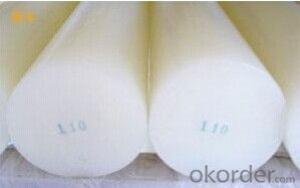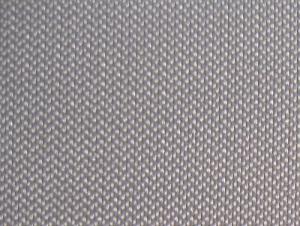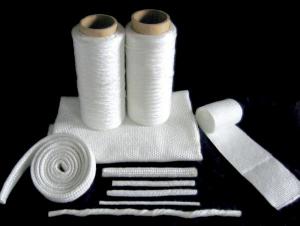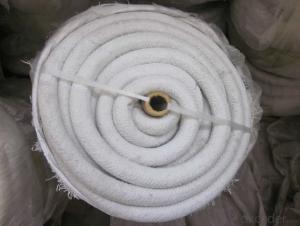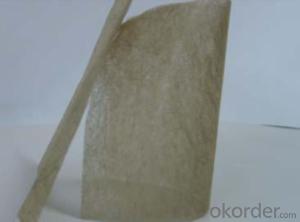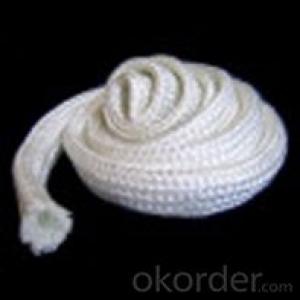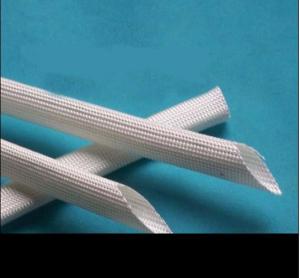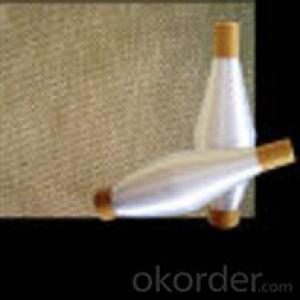Structure Textile Application Zirconia Ceramic Rod
- Loading Port:
- Qingdao
- Payment Terms:
- TT OR LC
- Min Order Qty:
- 500 m.t.
- Supply Capability:
- 2000 m.t./month
OKorder Service Pledge
OKorder Financial Service
You Might Also Like
Zirconia ceramic rods with precision slotted have the advantages of super hardness,high wear-resisting,good corrosion resistance ,high temperature tolerance,, high strength , precision process, high mechanical strength, good chemical stability, polishing surface and so on.
The following data as your reference .
Items | Unit | Data |
Density | g/cm3 | 6 |
Flexural Strength | MPa | 1000 |
Compressive Strength | MPa | 3000 |
Modulus of Elasticity | GPa | 200 |
Impact Resistance | MPa·m1/2 | 8 |
Weibull Modulus | m | 22 |
Vickers Hardness | HV0.5 | 1300 |
Thermal Conductivity | W/mk | <2 |
Highest Application Temperature | °C | 1000 |
Volume Resistivity at 20°C | Ω.cm20 | >1013 |
Dielertric strength | KV/mm | - |
Thermal expansion | X10-6/K | 10 |
Forming methods includes
1,drying pressing
2,isostatic pressing
3,hot pressing casting
The application of our product
1, ceramic shaft for aquatic animals equipment filter pump
2, Ceramic plunger for high pressure cleaner.
3,Wearlessness,resistant acid-base and high intensity ceramic assembly apply to petroleum ,chemical and chemical industry.
4,Wearlesness, corrosion resistance, thermostable parts apply to precision machine.
- Q:Can glass fiber textiles be crocheted?
- Yes, glass fiber textiles can be crocheted. Crocheting involves creating fabric by interlocking loops of yarn or thread using a crochet hook. While traditionally done with various types of yarn, crocheting can also be done with other materials such as fabric strips, wire, and even glass fiber textiles. Crocheting with glass fiber textiles can create unique and innovative designs, adding strength and durability to the resulting fabric. The process of crocheting with glass fiber textiles may require using a specialized crochet hook designed for working with tougher materials. However, it is important to note that working with glass fiber textiles may be more challenging than working with traditional yarn, as the texture and stiffness of the material can affect the ease of crocheting. Additionally, proper safety precautions should be taken when handling glass fiber textiles, as they can cause irritation to the skin and respiratory system.
- Q:Can glass fiber textile be stretched?
- Yes, glass fiber textile can be stretched to a certain extent. However, it has a relatively low elasticity compared to other fibers such as nylon or spandex.
- Q:Can glass fiber textiles be used in reinforcement of 3D printed parts?
- Yes, glass fiber textiles can be used in the reinforcement of 3D printed parts. Glass fiber textiles are commonly used as reinforcement materials in various industries due to their high strength, stiffness, and thermal resistance properties. When incorporated into 3D printed parts, these textiles can enhance the mechanical properties of the printed components, making them stronger and more durable. The glass fiber textiles can be embedded within the 3D printed part during the printing process, ensuring uniform distribution and integration of the reinforcement. This reinforcement technique can be particularly useful in applications that require high strength and dimensional stability, such as automotive parts, aerospace components, and structural elements. However, it is important to note that the addition of glass fiber textiles may affect the printability and surface finish of the 3D printed part, so proper consideration and optimization of the printing parameters may be necessary to achieve the desired results.
- Q:How do glass fiber textiles contribute to breathability?
- Breathability is enhanced by glass fiber textiles, as they enable air to flow freely through the fabric. This is because of the porousness of glass fiber, which forms tiny gaps and spaces within the textile. These gaps facilitate air circulation, thereby increasing breathability and preventing the accumulation of heat and moisture. Moreover, glass fiber textiles are typically lightweight and have a low density, effectively enhancing their breathability. By allowing air to pass through, glass fiber textiles aid in regulating body temperature and ensuring comfort for the wearer, especially in warm or humid environments.
- Q:Can glass fiber textile be used in window treatments?
- Indeed, window treatments can incorporate glass fiber textiles. Renowned for their durability, strength, and ability to withstand UV rays, these textiles prove ideal for this purpose. Whether utilized as curtains, blinds, or shades, they effectively offer privacy, light control, and heat insulation. Moreover, their flame-resistant nature enhances the safety of window treatments. Furthermore, their effortless cleaning and maintenance make them a pragmatic option for both residential and commercial settings.
- Q:How are glass fiber textiles used in the marine industry?
- Glass fiber textiles are commonly used in the marine industry for various purposes. They are used to reinforce and strengthen the hulls, decks, and other structural components of boats and ships. These textiles provide excellent resistance to water, chemicals, and UV rays, making them ideal for marine applications. They are also used for insulation, acoustic dampening, and fireproofing in the marine industry. Overall, glass fiber textiles play a crucial role in enhancing the performance, durability, and safety of marine vessels.
- Q:Are glass fiber textiles resistant to discoloration?
- Yes, glass fiber textiles are generally resistant to discoloration. Glass fiber is a highly durable material that is resistant to fading, yellowing, and discoloration caused by exposure to sunlight, chemicals, and other environmental factors. This makes glass fiber textiles a popular choice for applications where colorfastness is important, such as in outdoor furniture, awnings, and automotive upholstery. Additionally, glass fiber textiles can also withstand high temperatures without losing their color, further enhancing their resistance to discoloration.
- Q:Are glass fiber textiles resistant to fraying?
- Yes, glass fiber textiles are generally resistant to fraying. Glass fibers are known for their high strength and durability, which makes them less prone to fraying compared to other materials like cotton or polyester. The manufacturing process of glass fiber textiles involves weaving the fibers together tightly, creating a strong and tightly-knit fabric structure. This helps to prevent the individual fibers from becoming loose and fraying. Additionally, glass fiber textiles often have a smooth surface, further reducing the likelihood of fraying. However, it is important to note that excessive wear and tear or improper handling can still lead to minor fraying in glass fiber textiles over time.
- Q:Can glass fiber textile be knitted?
- Yes, glass fiber textile can be knitted.
- Q:Can glass fiber textiles be used in automotive headliners?
- Glass fiber textiles are capable of being utilized in automotive headliners. With their lightweight and high strength, glass fibers prove to be an ideal material for automotive applications. They possess exceptional sound absorption and insulation properties, which play a crucial role in reducing noise and heat transfer in vehicles. Moreover, the versatility of glass fiber textiles enables them to be easily molded into intricate shapes, allowing for customization and the integration of various features such as lighting, air vents, and speakers. Furthermore, their resistance to moisture, chemicals, and UV radiation guarantees the durability and longevity of the headliners. Overall, the numerous advantages offered by glass fiber textiles make them a suitable choice for automotive headliners.
1. Manufacturer Overview |
|
|---|---|
| Location | |
| Year Established | |
| Annual Output Value | |
| Main Markets | |
| Company Certifications | |
2. Manufacturer Certificates |
|
|---|---|
| a) Certification Name | |
| Range | |
| Reference | |
| Validity Period | |
3. Manufacturer Capability |
|
|---|---|
| a)Trade Capacity | |
| Nearest Port | |
| Export Percentage | |
| No.of Employees in Trade Department | |
| Language Spoken: | |
| b)Factory Information | |
| Factory Size: | |
| No. of Production Lines | |
| Contract Manufacturing | |
| Product Price Range | |
Send your message to us
Structure Textile Application Zirconia Ceramic Rod
- Loading Port:
- Qingdao
- Payment Terms:
- TT OR LC
- Min Order Qty:
- 500 m.t.
- Supply Capability:
- 2000 m.t./month
OKorder Service Pledge
OKorder Financial Service
Similar products
New products
Hot products
